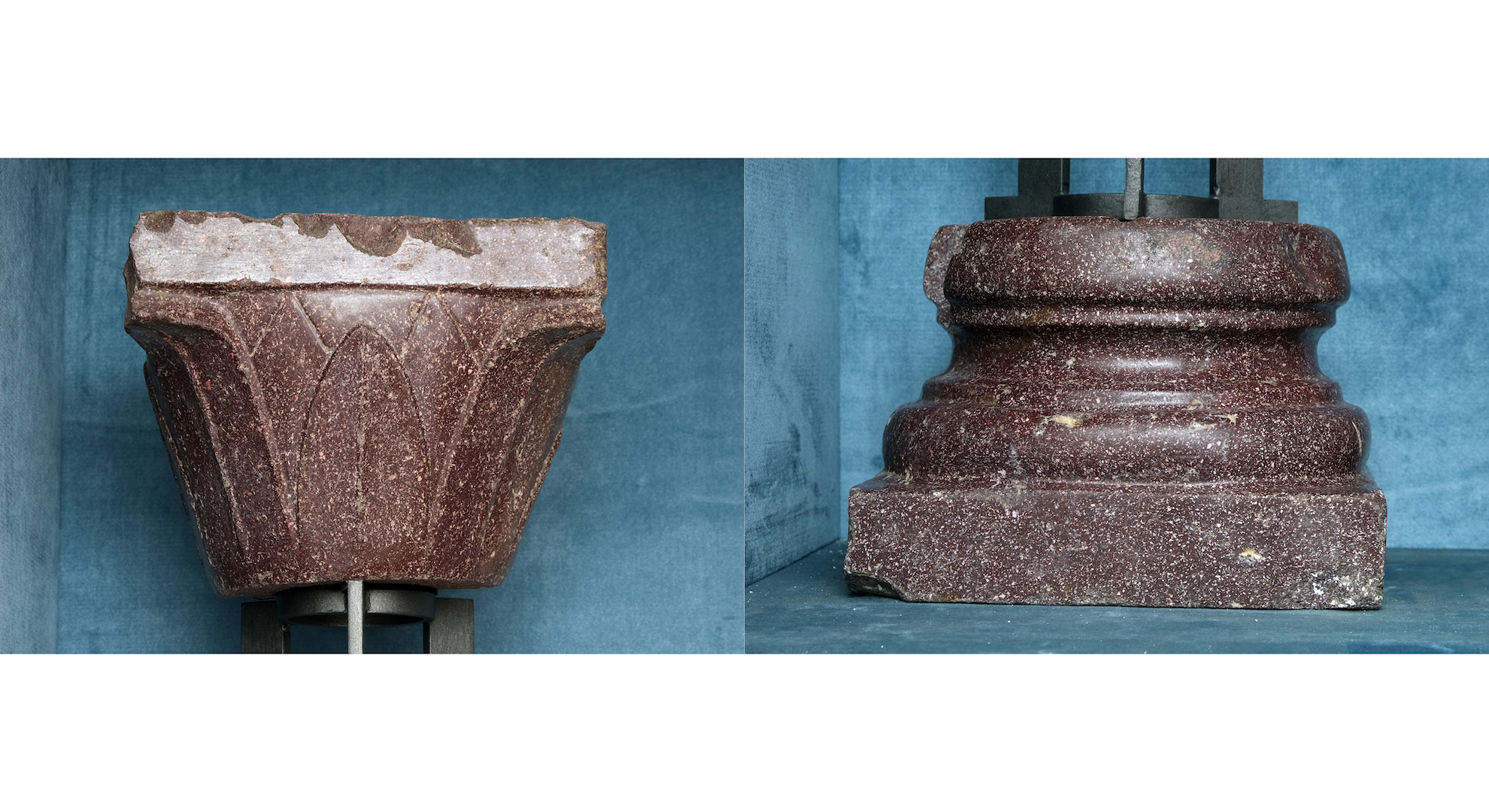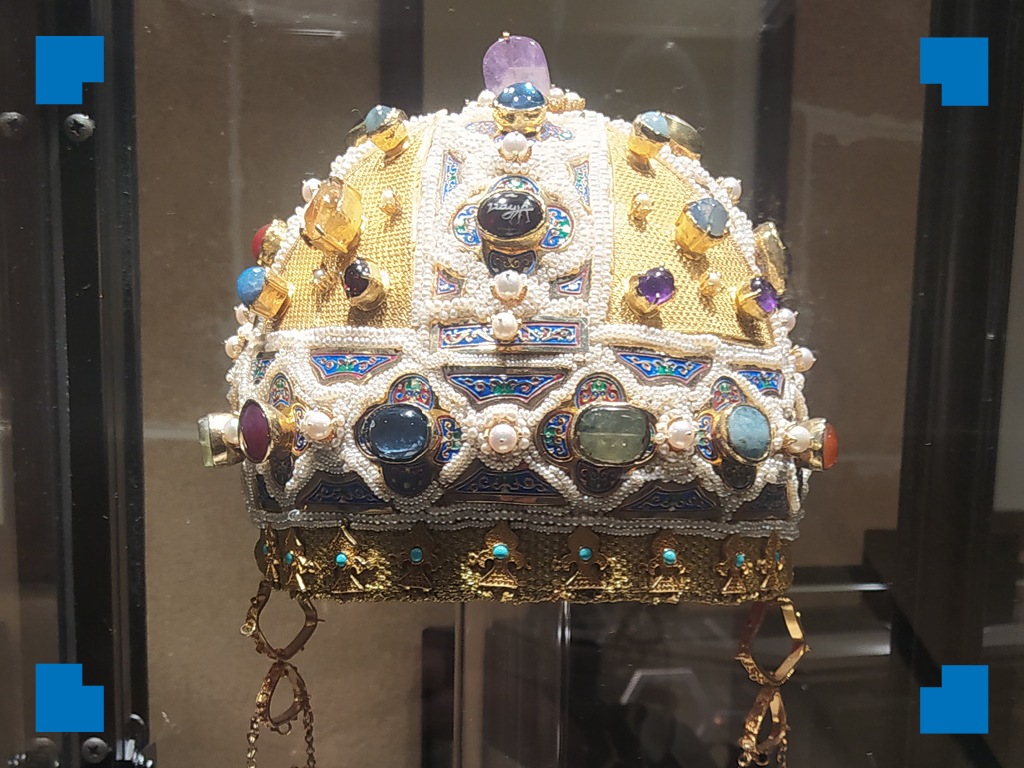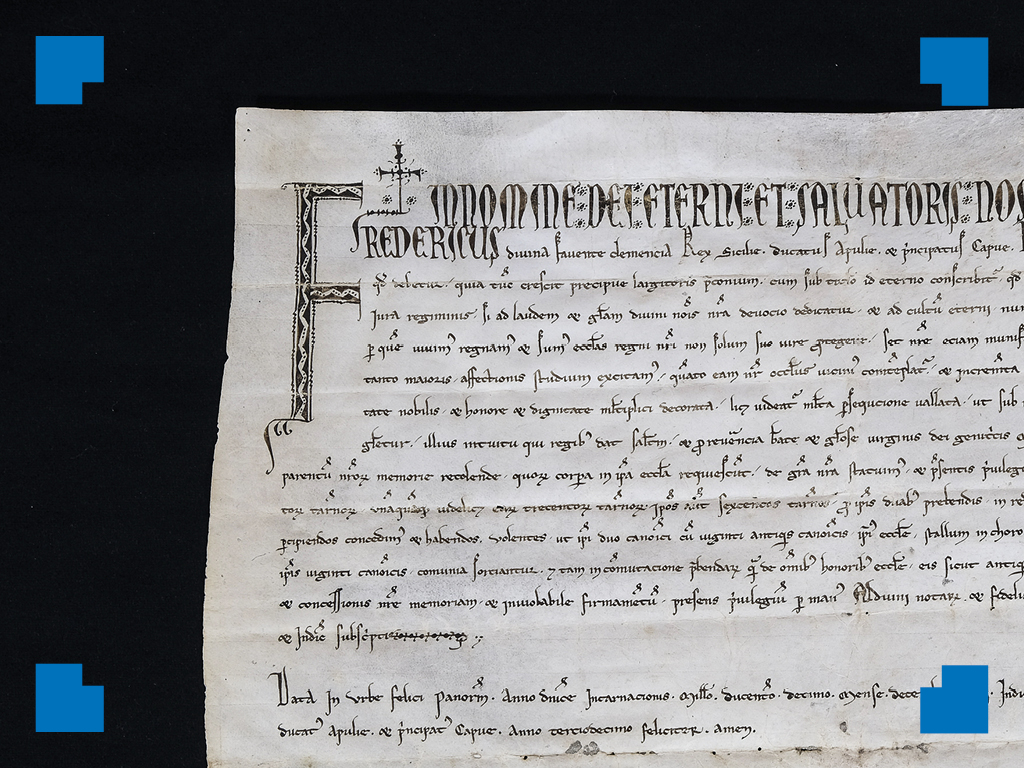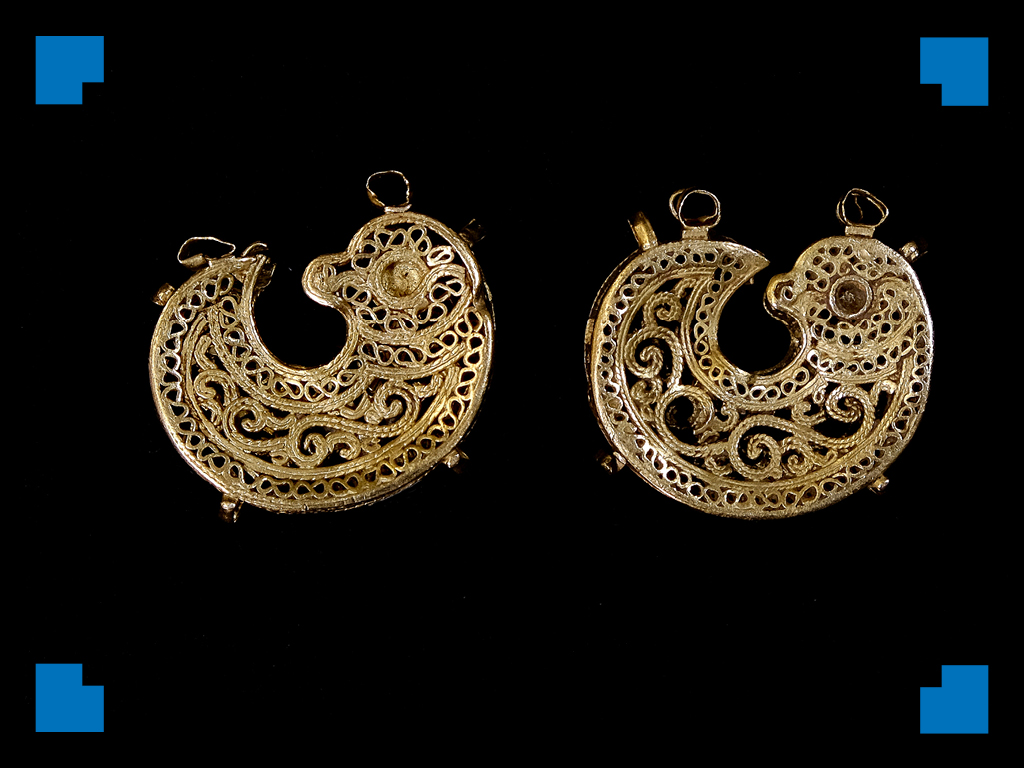
15. Capital and column base
Sicilian craftsmen (?), last quarter of 12th c.
Capital and column base
from the canopy formerly above the sarcophagus of King William I
porphyry (base: 25x35x35 cm; iron structure: 90x23x23 cm; capital: 26x35x35 cm; total: 141 cm)
Monreale, Diocesan Museum, from the Cathedral
William II of Hauteville, after having founded the Benedictine monastic complex of Monreale, with the intention of emulating and surpassing his grandfather Roger II (first King of Sicily in 1130, Focus cat. 15), commissioned for his father William I a sarcophagus in precious Egyptian porphyry (last quarter of the 12th century), above which was a canopy with six columns of the same material.
In 1811 a ravaging fire damaged the Cathedral of Monreale and its monuments, thus leading to medieval revival restoration works.
The collapse of the roof destroyed the canopy, which was not rebuilt, and damaged the sarcophagus. The latter was restored by will of the Bourbon sovereigns in the first half of the 19th century.
Here displayed you see one of the capitals, with lanceolate leaves, and its Corinthian order base with plinth; the shattered column has been replaced in the exhibition setting with an iron structure.
Focus – The Royal and Imperial Tombs of the Norman-Swabian Dynasty in Sicily
Egyptian red porphyry, a very hard rock similar to purple, had been associated with Roman imperial dignity since the time of Augustus, and then in the Byzantine Empire.
The first King of Sicily, Roger II of Hauteville (father of Constance), to imitate the ancient imperial tradition, after completely repudiating the archaic Norman funerary customs, before 1145 had two monumental sarcophagi carved in this precious material for the cathedral of Cefalù, designed as the first dynastic temple.
At the time porphyry was very rare and mostly reused, as the quarry had been depleted since the sixth century.
William II of Hauteville – after founding the monastic complex of Monreale, with the intent to emulate and surpass his grandfather Roger II (first King of Sicily in 1130, Focus cat. 15) – entrusted the custody of the bodies of his parents and siblings and the prayers for their souls to the Benedictine monks, commissioning for his father William I a porphyry sarcophagus (last quarter of the twelfth century) similar to the simpler one in Cefalù, above which he had a canopy on six columns of the same material erected.
This expedient led to the creation of covers that were similar to two slopes supported by porphyry, granite or marble columns, with mosaics, even for other similar tombs.
In the meantime, the monument that we can admire today in the Cathedral was created for Roger II by the archbishop of Palermo Gualtiero (last quarter of the twelfth century), with a case made of porphyry slabs and supports with white marble telamons.
In the first two sarcophagi, moved from Cefalù to the Cathedral of Palermo in 1215, there are the remains of Frederick II and his father Henry VI of Swabia.
Frederick himself continued the tradition of porphyry tombs by having the body of his mother Constance of Hauteville interred in Palermo in a specimen similar to that of his father Henry VI.
In 1824, significantly, chronicles reported that the tombs of the cathedrals of Palermo and Monreale were visited by Her Imperial Highness Marie Louise of Austria, Duchess of Parma, long time widow of Napoleon Bonaparte.


